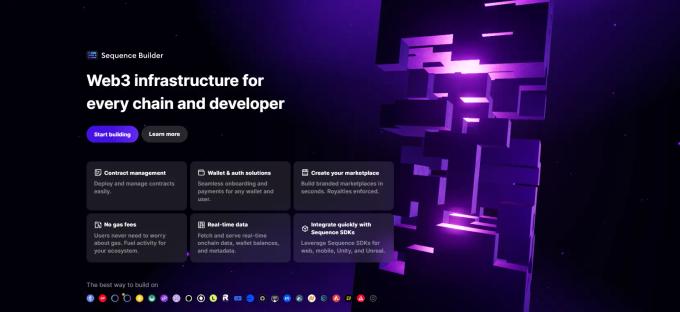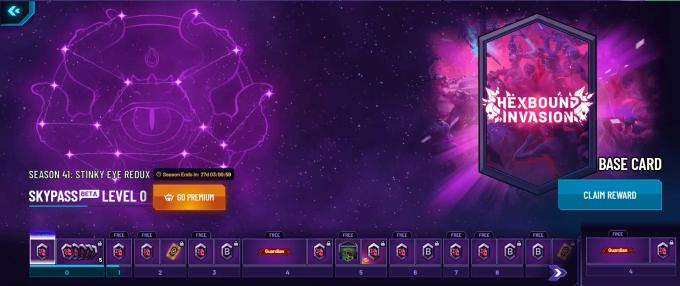On-chain vs. off-chain: Tips for your next web3 game
February 24 2025

As a game developer, you might have some questions when integrating web3 technologies to elevate your players’ experience.
From understanding core blockchain concepts to navigating wallets, accounts, payments, tokens, game items, marketplaces, and data, the path ahead may seem complex.
Designing how and when your game interacts with the blockchain is one of the most important aspects to get right. Allow this article to serve as your guide as you explore and experiment with building a web3 game or implementing web3 features into your existing design.
Let’s start with the basics.
The difference between on-chain and off-chain games
On-chain gaming is a rapidly evolving and innovative sector that leverages blockchain and web3 technologies to revolutionize various aspects of the game, including digital ownership, enhanced transparency, new game design opportunities, and novel monetization models.
This new paradigm represents a significant departure from the traditional gaming model (aka off-chain games) that operates on centralized servers and databases. With off-chain games, the game systems—e.g. items, accounts, logic, and player data—are stored and managed solely by the game developer or publisher.
To put this into perspective, imagine you are a PC or console player. You purchase a game, create an account, advance in the game, or level up your experience, collect or win items and rewards, and store them in your local inventory. In this conventional gaming setup, all of this information and the game's resources are controlled by the game creators, and the use of these items and their exchange are limited to the game’s ecosystem.
Additionally, off-chain games’ monetization strategies primarily revolve around expansions or microtransactions, like in-game items. These transactions tend to hold economic value only within the game's ecosystem. Consider classic multiplayer games like Fortnite or World of Warcraft where gaming studios and publishers are the sole beneficiaries of player purchases, like for aesthetics or game accounts. Other open marketplaces where players can purchase items or characters operate in grey markets, forcing players into risky and unofficial ecosystems.
On the other hand, on-chain gaming (also crypto gaming or NFT gaming) refers to the growing ecosystem of games that operate partially (or in a few cases completely) on blockchain networks. A game, or gamified experience, is considered on-chain if some of its game systems are stored and run on the blockchain. Only a handful of titles today, like Dark Forest, can be considered to be fully on-chain for business and technical reasons which we will explain later in this article.
Blockchain gaming offers opportunities that reshape how you and your players interact with games. For example, digital items (NFTs) can be transferred, traded, or sold in a secure and transparent manner, like in Ubisoft’s Champions Tactics or Sunflower Land. Think of it as a Steam marketplace, but infinitely more open, scalable, and extensible.
In some instances, game developers let players influence the development roadmap thanks to the establishment of Decentralized Autonomous Organizations (DAOs) or fund their favorite game early on by purchasing digital tokens - upon due diligence, of course.
Also, transactions of gaming titles leveraging web3 elements are recorded on a public and immutable ledger in exchange for gas fees, which makes it easy for anyone to access this information and increases transparency in the community.
As more and more "real world" use cases become reality, decentralizing game economics and systems ultimately opens limitless opportunities for players, developers, and brands, who have more freedom and incentives to collaborate with one another.
Understanding which game design elements are usually on-chain or off-chain
To recap, on-chain refers to everything that happens on the blockchain while off-chain refers to everything that happens outside of the blockchain. While off-chain games are centralized and controlled entirely by your team of developers, titles with on-chain systems can be partially owned and operated by the players, paving the way for novel gaming experiences and monetization opportunities.
We understand that you often face a significant decision when it comes to integrating web3 into a game: should you build the whole game on-chain or selectively incorporate web3 elements?
You might be wondering which game elements should go on-chain and which should remain off-chain. How do you determine the best approach for each aspect of your game? Is there a one-size-fits-all solution?
Let's dive into the game design elements typically linked with web3 integration to help you get started.
In-game items. One of the central tenets of on-chain gaming is the introduction of digital tokens that represent ownership of in-game items, characters, or collectibles. These digital items are indivisible and distinguishable, guaranteeing that players truly own them. Tokens allow players to easily buy, sell, and trade in-game items on web3 marketplaces and record any transaction associated with them. In so doing, tokens lay the groundwork for player-led economies, and generate new potential revenue streams.
Governance. Blockchain technology, through smart contracts and tokens, allows for the creation of decentralized governance models like DAOs which could enable players to influence the development direction, economic policies, and updates of the game, democratizing the gaming experience and fostering a strong sense of community engagement.
And here are the game elements that typically reside off-chain:
Game mechanics. While smart contracts establish the fundamental framework for on-chain game logic elements, the detailed or intricate interactions, AI behaviors, and physics simulations necessary for gameplay are typically processed off-chain.
User interfaces (UI). The user interfaces through which players navigate menus, inventory screens, settings, and more are off-chain components. While these interfaces might display on-chain data, such as a player's digital collection, they are not directly stored on the blockchain.
Gameplay. The dynamic nature of gameplay necessitates off-chain processing. As blockchain networks are still evolving in terms of transaction speed and scalability, processing every player's action on-chain might result in non-optimal gaming experiences. Off-chain game servers still facilitate smooth interactions, enabling players to move, interact, and engage in rapid-fire actions seamlessly. Also, players do not require certain aspects, like tournament results, to be fairly verifiable which would require them to be hosted on a blockchain. Players generally trust developers with the results of these elements.
Deciding which design elements to make on-chain or off-chain when building a web3 game
The choice between creating a fully on-chain game or incorporating selected web3 features hinges on a multitude of factors, including the game’s intended audience, technical requirements, and development objectives. In many instances, a pragmatic approach involves selectively integrating certain features onto the blockchain while keeping most aspects off-chain.
Target audience and community
Understanding your game’s target audience and core community is crucial. Some players are deeply interested in verifying tournament results, true ownership, and interoperability, while others may not yet care or be aware of these systems.
One of the primary challenges you face when incorporating on-chain elements is that these features are often introduced and marketed with an emphasis on technology rather than the benefits they offer to every player. These benefits might include the ability to trade in-game items beyond the confines of a single game.
You can make significant progress by gaining a clear understanding of your target audience and identifying which features enhance their experiences such as seamless login processes, unique in-game items, or the overall gameplay mechanics. By customizing your communication to align with these insights, you can test and integrate web3-powered features without encountering resistance from the community.
Another challenge developers must overcome is the misconception that players must understand blockchain or web3 to appreciate innovative game features. This might have been true when web3 infrastructure was still in its first generation and required players to navigate lengthy, cumbersome processes for setting up game accounts and web3 wallets.
Thankfully, this is no longer the case. Modern web3 solutions such as Sequence Builder allow for gaming experiences that closely resemble their traditional counterparts. These experiences are user-friendly, do not demand intricate blockchain knowledge, and eliminate concerns about potential bad actors within the game’s ecosystem.
Technical considerations
Blockchain networks differ in their capacity to handle transactions and smart contract execution. You must evaluate whether your chosen blockchain can handle the expected transaction volume, especially if the game involves frequent in-game actions, item transfers, or marketplace interactions.
In certain genres such as turn-based strategy games or collectible games with relatively low transaction rates, scalability may not be a primary concern. However, real-time games with a large player base may require a blockchain with higher throughput and low latency.
The main question here would be: does each transaction, each player move, or action need to be fairly verifiable through a blockchain? Do players care or can they “trust” a third party for game logic and mechanics?
The cost associated with executing transactions on the blockchain is another important consideration. Most blockchains have fees for smart contract execution and these fees can fluctuate significantly based on network congestion and computational complexity.
You should weigh the implications of high transaction costs against your monetization strategy. For example, if a game heavily depends on microtransactions, elevated gas fees could substantially affect both the player experience and revenue. In response, you might opt to keep only specific elements on-chain to mitigate expenses and development resources.
Lastly, if you intend to enable players to use their in-game items across multiple games or platforms, you should also consider which blockchains or standards offer essential interoperability features. Certain blockchains incorporate standards like ERC-721 and ERC-1155 (Ethereum) that simplify cross-game item transfers, whereas others may require customized solutions.
Game developers’ objectives
Integrating web3 should aim at making fun and innovative games players will love and stick to over time. So the question is: what makes sense from a gameplay point of view? Does it make sense to host each single game element on-chain? Is there a business case for it?
Consider trading card games (TCGs) like Skyweaver or Splinterlands, where the core gameplay revolves around tradable in-game items. Their objective was simple: making fun games where players could own and trade cards and collectible characters across EVM chains. And so they did, they tokenized these items, enhancing the gameplay without adding other complexity.
Now consider high-end graphics and complex simulations such as massively multiplayer online role-playing games (MMORPG) like Big Time, or low-latency and high-performance genres such as first-person shooters (FPS) like My Pet Hooligans. Does it make sense for them to host each single system on-chain? Is it advisable to do that given the costs and the development resources it would take?
It’s essential for you to answer these questions before embarking on any web3 development efforts. At Sequence, we have been there. While developing our game Skyweaver through our web3 stack, we have faced all of the challenges and doubts we are writing about, so we know first-hand how to solve them to achieve award-winning game experiences.
On-chain and off-chain metrics to monitor success
The top success metrics for on-chain games align with traditional ones:
- Daily active users (DAU): The number of unique players engaging with the game on a daily basis.
- Player ratings and reviews: Tracking user reviews, ratings, and feedback on app stores and social media can help you better understand the public sentiment of your game.
- Player retention: The percentage of players who continue to play the game over a certain period of time.
- Lifetime value (LTV): The total revenue a project expects to earn from a player throughout their entire relationship.
- Average revenue per user (ARPU) and average revenue per paying user (ARPPU): The average revenue generated by each player and paying player.
- Conversion rate: The percentage of players that make in-game purchases or subscribe to premium features.
- Advertising and user acquisition costs: Analyzing the cost of acquiring new players through advertising and marketing efforts compared to their LTV will indicate if this is a successful onboarding tactic to bring players to your game.
Other web3-specific success metrics, albeit secondary and monetization-focused, include:
- Transaction volume: The total number and value of transactions occurring on the blockchain within the game.
- Token or item holders: The number of players holding in-game tokens or items on the blockchain. This metric can reflect the game's popularity and the impact of its items for trading potential on marketplaces.
- Secondary market statistics: Secondary sales, pricing, volume, where are players trading, what are they doing with their assets, what third-party websites they use, and what are people building around the game ecosystem.
The real potential of game success metrics emerges when both on-chain and off-chain metrics are amalgamated, providing a comprehensive understanding of player behavior and preferences. By connecting these data sources, you can uncover hidden patterns and relationships that might remain unnoticed when examining metrics in isolation.
Building the future of gaming: it starts with you and Sequence web3 game development platform
The decision to incorporate blockchain technology into your game design should harmonize with your overarching vision, the desired user experience, and the distinct benefits that web3 can offer.
The journey to commence the development of web3-powered experiences is no small feat. However, it's worth noting that the web3 ecosystem has undergone substantial and consistent evolution, now providing comprehensive web3 development platforms that abstract away the complexities of building a game.
This means that you can concentrate on what truly matters: crafting seamless web3 gaming experiences that players will love today, tomorrow, and in the future.
Our advice? Understand what your vision is, how web3 can realistically help achieve it, and seek out a trusted partner with a solid web3 gaming stack like Sequence’s, which can fully support your vision, enabling you to take those exciting first steps toward bringing your game to life.
Sequence makes building onchain simple. Developers and teams can launch, grow, and monetize apps with unified wallets, 1-click cross-chain transactions, and real-time data, all in a modular and secure stack. No more stitching together fragmented tools or battling poor user flows. Sequence is production-ready infrastructure that helps teams ship faster, onboard more users, and scale confidently. From chains and stablecoins to DeFi and gaming, Sequence powers developers and applications across the EVM ecosystem with billions in transaction volume and millions of users. Trusted by leaders in blockchain, Sequence powers today’s onchain apps and delivers future-proof infrastructure for tomorrow’s breakthroughs. Learn more at sequence.xyz.
Written by

Nicola Fraccaroli
Content Marketing Manager
Ari Lotter
Technical Solutions Lead - Engineering and ProductRelated Posts
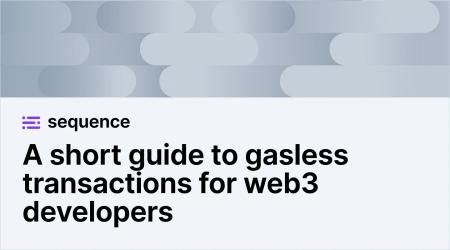
A short guide that explains exactly what gasless transactions are, and why they matter for your web3 experience.
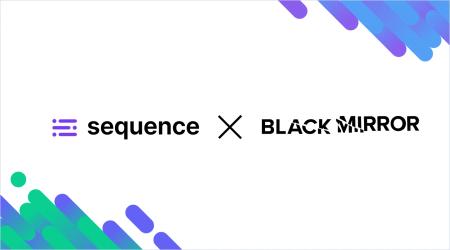
In partnership with KOR Protocol, Sequence and Msquared, Black Mirror's franchise has launched the $MIRROR token and a new web3 experience!
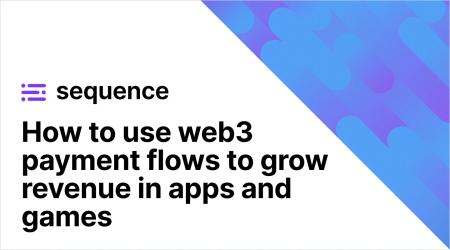
Web3 payment flows allow any app to embed onchain purchases and interactions in a way that feels natural for users. Learn more about them!

As more applications and protocols move onchain, indexers redefine how dev teams access, organize, and use blockchain data. Learn how!



